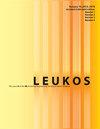Optimization of luminaire layout to achieve a visually comfortable and energy efficient indoor general lighting scheme by Particle Swarm Optimization
IF 2.6
2区 工程技术
Q2 CONSTRUCTION & BUILDING TECHNOLOGY
引用次数: 13
Abstract
ABSTRACT The design of an indoor lighting system for a sustainable building should comply with the recommended maximum limit of lighting power density. The occupants’ visual comfort and visual performance are to be ensured by complying with some mutually conflicting lighting design parameters, such as maintained average illuminance, overall uniformity, and maximum unified glare rating, to the recommended limits. Judicious balance among these multiple conflicting design parameters is a practical design problem. This article aims to address these aspects of indoor lighting design by applying a particle swarm optimization (PSO) algorithm in a developed lighting computation program. The objective function is formulated with maximum or minimum limits for the design parameters recommended by international standards. The effectiveness of the developed program is evaluated by designing an indoor lighting system with commercially available luminaires for an office space that ensures optimized visual comfort, energy efficiency, and initial cost. Optimized results are validated by DiaLux simulation and a maximum deviation of 2.27% is found. Thus, the results show good agreement with DiaLux simulation and significant improvement in the uniformity of illuminance (0.90) compared to the recommended minimum value (0.70) and in discomfort glare (16) compared to the recommended allowable maximum value (19). The developed program establishes the usefulness of the PSO algorithm to optimize the luminaire layout for an indoor general lighting scheme.利用粒子群算法优化灯具布局,实现视觉舒适和节能的室内普通照明方案
可持续建筑室内照明系统的设计应符合推荐的最大照明功率密度限制。通过遵守一些相互冲突的照明设计参数,如保持平均照度、整体均匀性和最大统一眩光额定值,以确保居住者的视觉舒适和视觉性能。在这些相互冲突的设计参数之间的合理平衡是一个实际的设计问题。本文旨在通过在开发的照明计算程序中应用粒子群优化(PSO)算法来解决室内照明设计的这些方面。目标函数是用国际标准推荐的设计参数的最大或最小限值来制定的。通过为办公空间设计室内照明系统,以确保最佳的视觉舒适性、能源效率和初始成本,评估开发项目的有效性。通过DiaLux仿真验证了优化结果,最大偏差为2.27%。因此,结果与DiaLux模拟结果吻合良好,照度均匀性(0.90)与推荐最小值(0.70)相比有显著改善,不适眩光(16)与推荐允许最大值(19)相比有显著改善。所开发的程序建立了粒子群算法在室内一般照明方案中优化灯具布局的有效性。
本文章由计算机程序翻译,如有差异,请以英文原文为准。
求助全文
约1分钟内获得全文
求助全文
来源期刊

Leukos
工程技术-光学
CiteScore
7.60
自引率
5.60%
发文量
19
审稿时长
>12 weeks
期刊介绍:
The Illuminating Engineering Society of North America and our publisher Taylor & Francis make every effort to ensure the accuracy of all the information (the "Content") contained in our publications. However, The Illuminating Engineering Society of North America and our publisher Taylor & Francis, our agents, and our licensors make no representations or warranties whatsoever as to the accuracy, completeness, or suitability for any purpose of the Content. Any opinions and views expressed in this publication are the opinions and views of the authors, and are not the views of or endorsed by The Illuminating Engineering Society of North America and our publisher Taylor & Francis. The accuracy of the Content should not be relied upon and should be independently verified with primary sources of information. The Illuminating Engineering Society of North America and our publisher Taylor & Francis shall not be liable for any losses, actions, claims, proceedings, demands, costs, expenses, damages, and other liabilities whatsoever or howsoever caused arising directly or indirectly in connection with, in relation to, or arising out of the use of the Content. Terms & Conditions of access and use can be found at http://www.tandfonline.com/page/terms-and-conditions .
 求助内容:
求助内容: 应助结果提醒方式:
应助结果提醒方式:


